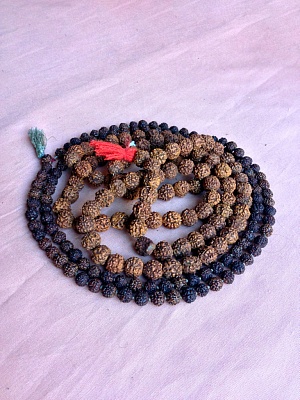News
-
 Pranayama workshop, Mar 1-7
Pranayama workshop, Mar 1-7
-
 21-day Pranayama challenge
21-day Pranayama challenge
-
 Nāda meditation workshop, January 8-12
Nāda meditation workshop, January 8-12
-
 April 3, Navaratri with Yogi Matsyendranath Maharaj, Australia, Queensland
April 3, Navaratri with Yogi Matsyendranath Maharaj, Australia, Queensland
-
 March 17, 2020. Purifiying Pranayama With Yogi Matsyendra Nath
March 17, 2020. Purifiying Pranayama With Yogi Matsyendra Nath
-
 November 2019, Tantra Workshop Series in Argentina
November 2019, Tantra Workshop Series in Argentina
-
 Workshop in Gualeguaychu
Workshop in Gualeguaychu
-
 17-18 November 2018, Yogi Matsyendranath in Źarate (Argentina)
17-18 November 2018, Yogi Matsyendranath in Źarate (Argentina)
-
 15-16 November 2018, Yogi Matsyendranath visit to Uruguay
15-16 November 2018, Yogi Matsyendranath visit to Uruguay
-
 12 Nov 2018, Lecture at USAL (Salvador University)
12 Nov 2018, Lecture at USAL (Salvador University)
-
 10-11 November 2018, Workshops in Quilmes and La Plata (Argentina)
10-11 November 2018, Workshops in Quilmes and La Plata (Argentina)
-
 8 November 2018, Open conference in Necochea (Argentina)
8 November 2018, Open conference in Necochea (Argentina)
-
 2,3,4 November 2018 - Participating in XVI Retreat International of Yoga and Meditation
2,3,4 November 2018 - Participating in XVI Retreat International of Yoga and Meditation
-
 Programme in Québec (Canada) 13-16 June
Programme in Québec (Canada) 13-16 June
-
 Melbourne Book Launch
Melbourne Book Launch
-
 4-years Summer Program
4-years Summer Program
-
 Biography of a Russian Yogi
Biography of a Russian Yogi
-
 November 2017, Visit of Yogi Matsyendranath to Argentina
November 2017, Visit of Yogi Matsyendranath to Argentina
-
 Satsangs of Yogi Matsyendranatha Maharaj in Berlin
Satsangs of Yogi Matsyendranatha Maharaj in Berlin
-
 Seminars and trainings in June-July 2015 (France)
Seminars and trainings in June-July 2015 (France)
Rudraksha
Rudraksha
 रूद्राक्ष, rūdrākṣa
रूद्राक्ष, rūdrākṣa
"Rudra’s eyes"
1) It is an evergreen broad-leaved tree whose seeds is used in India, Nepal and other Asian countries for making rosary (rudraksha japa-mala);
2) A rosary for japa (reading of mantras). Use of rosary has particular meaning and importance. Rosaries from seeds of rudraksha are mainly used for japa. Usually Saivas wear rudraksha-mala around the neck, on the arms or in the special pouch. The number of beads in chain is 108 mostly, but also there are malas with less number of beads (for example, 54 or 18). Beads needed for counting the number of read mantras. Seeds of rudraksha are important for yogis for different reasons. The word "rudraksha" means "Rudra’s (Shiva’s) eyes" and represents the third eye of transcendental vision. The seeds of rudraksha have specific grooves or "faces". A common type has five divisions, and these are symbolic of the five faces ("mukhas") of Shiva. It is considered the chain of 108 beads represents the sequence of numerous Siva’s manifestations on the Earth. Some seeds of rudraksha may have above forteen "faces". The "Chandra-jnana agama" describes results of wearing rudrakshas depending on number of its faces. Seeds of rudraksha are also used in some pujas.
In some cases for tantric mantras are used malas of others materials (stone or coral, for example). Following mantra for rudraksha is reading when you are wearing the mala at the beginning of the day. This mantra is also used for purification of the rosary.
rudrākṣ mantra
sat namo ādeś | gurujī ko ādeś | oṁ guru jī | mukhe brahmā madhye viṣṇu liṅg nām maheśvar sarvadev namaskāraṁ rudrākṣāya namo namaḥ | gagan maṇḍal me dhundhukārā pātāl nirañjan nirākār | nirākār me carṇ pādukā carṇ pādukā me piṇḍi piṇḍi me vāsuk vāsuk me kāsuk-kāsuk me kūrm-kūrm me marī-marī me nāgphaṇī alaṣ puruṣ ne bail ke sīṅg par rāī ṭhahrāī | dhīraj dharm kī dhūnī jamāī vahaṁ par rudrākṣ sumer parvat par jamāje usme se phūṭe chah ḍālī ek gayā pūrv ek gayā dakṣiṇ ek gayā paścim ek gayā uttar ek gayā ākāś ek gayā pātāl usme lāgyā ek mukhī rudrākṣ | śrī rudra par carhāye | śrī oṁkār ādināth jī ko |
The mantra from the book of Yogi Vilasnath "Shri Natha Rahasya"

